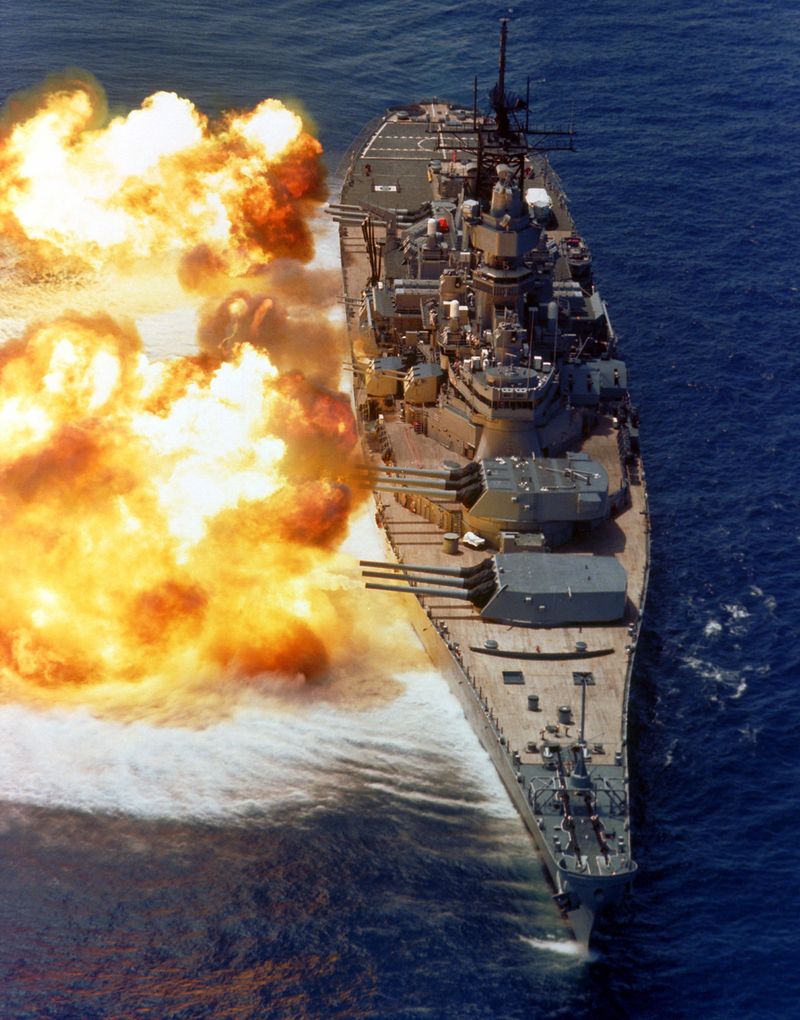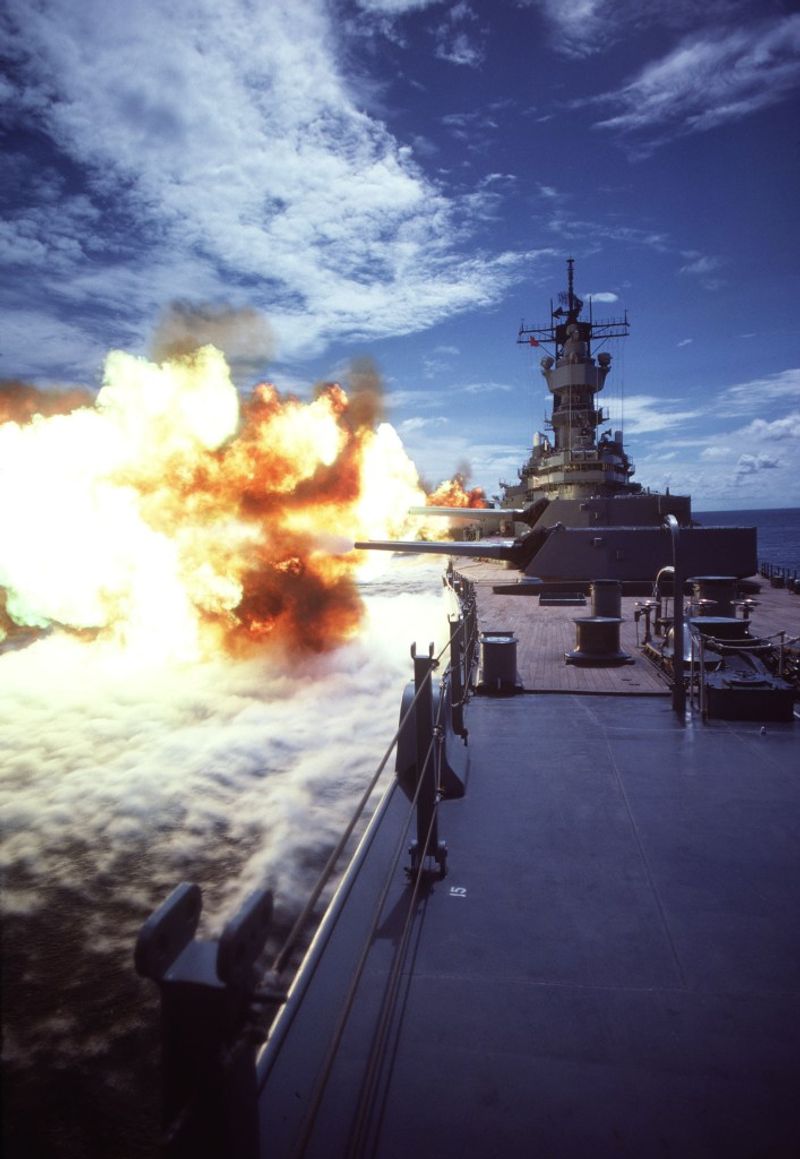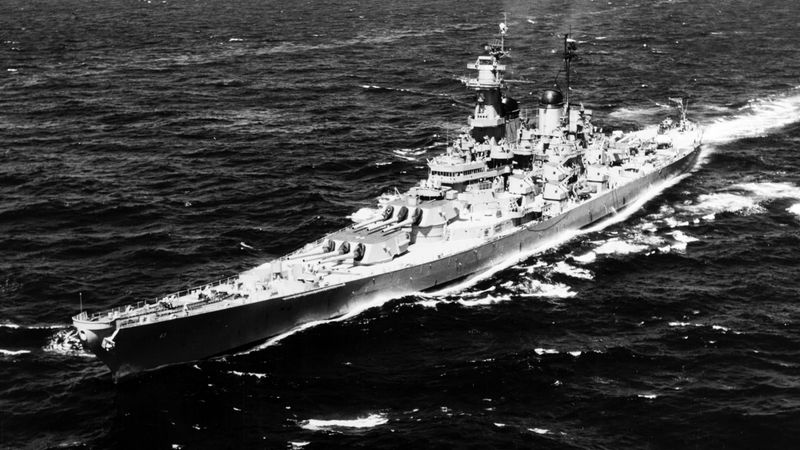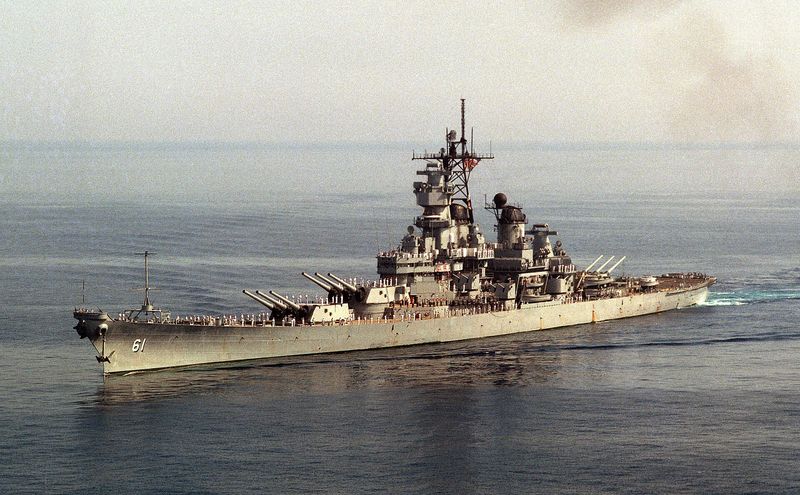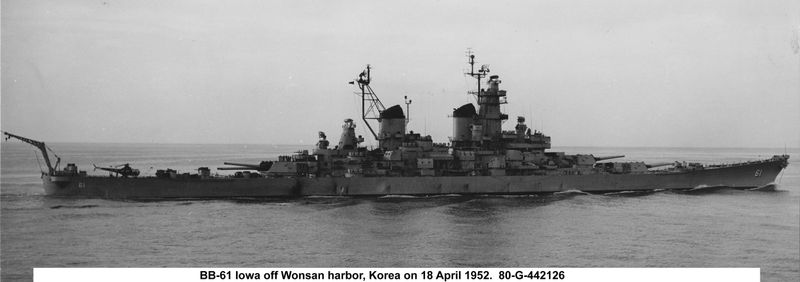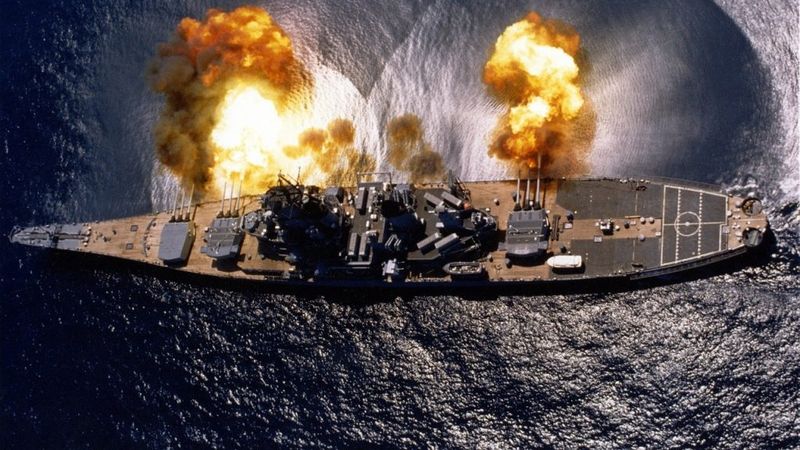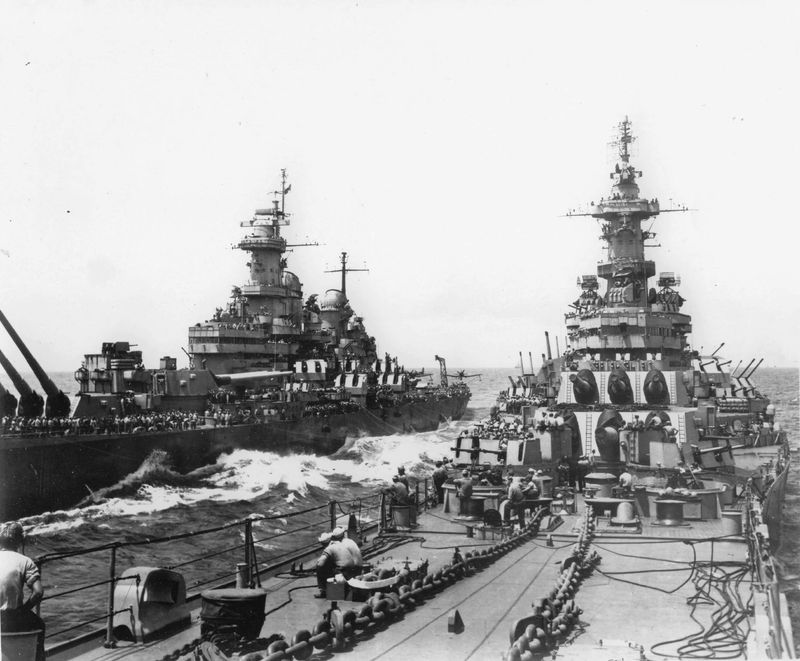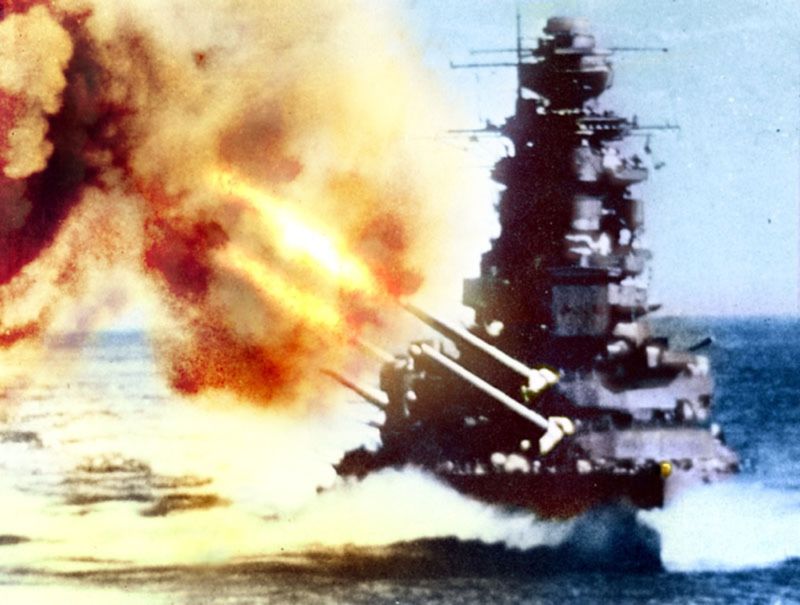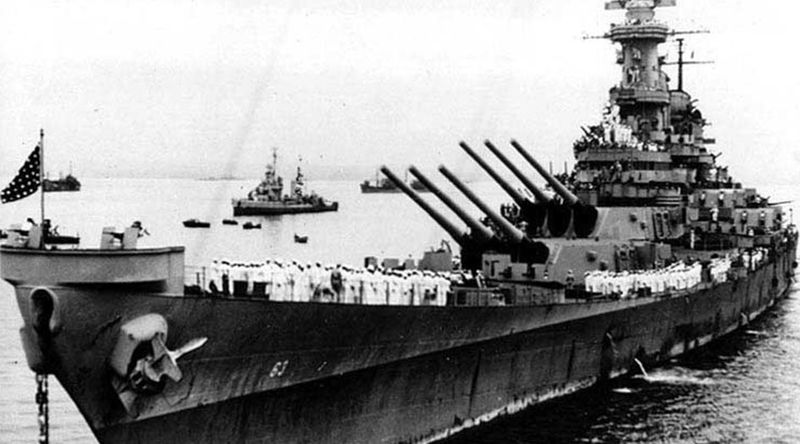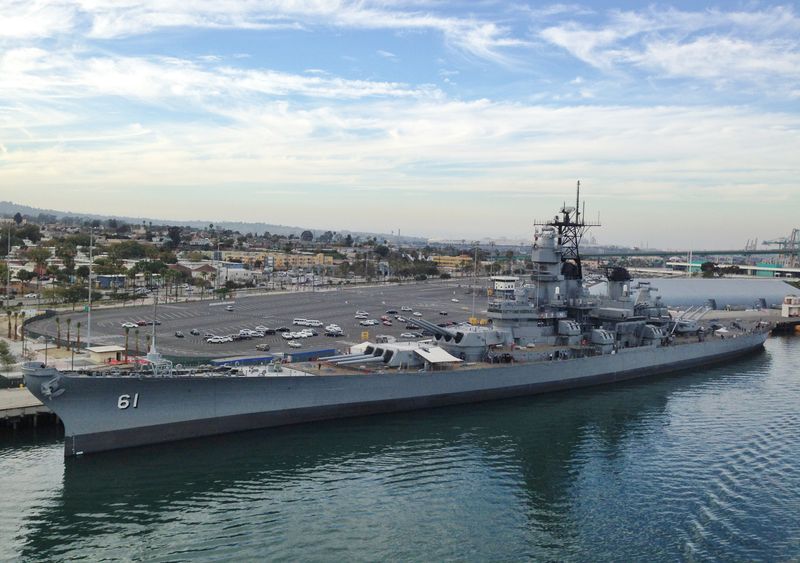After the devastating surprise attack on Pearl Harbor in 1941, America needed a powerful response. The USS Iowa emerged from this dark moment as more than just a battleship – it became a floating symbol of American determination and vengeance. This massive warship combined unprecedented firepower, speed, and armor to deliver justice across the Pacific. Its creation and deployment represented America’s unwavering commitment to defeating those who had struck the first blow.
1. Crisis-Born Battleship
From tragedy came power. The USS Iowa’s construction accelerated directly following the Pearl Harbor attack, when America desperately needed naval strength to counter Japanese dominance in the Pacific.
Naval engineers worked around the clock to create a vessel that could outmatch anything in Japan’s fleet. Their determination produced a battleship that weighed over 45,000 tons fully loaded – nearly the weight of four Eiffel Towers!
Launched in August 1942 and commissioned in February 1943, the Iowa represented America’s industrial might transformed into floating vengeance.
2. Unprecedented Firepower
Imagine the destructive force of nine 16-inch guns firing simultaneously. Each of the Iowa’s massive main guns could hurl 2,700-pound shells – heavier than a compact car – over 20 miles with pinpoint accuracy.
A single broadside from these weapons contained more explosive power than multiple bombing runs. The thunderous roar when these guns fired was so intense it created visible shock waves in the surrounding water.
Beyond the main armament, Iowa bristled with twenty 5-inch guns, numerous anti-aircraft weapons, and eventually Tomahawk cruise missiles in later service years.
3. Yamato Hunter
Naval intelligence had discovered Japan’s secret weapon – the massive Yamato-class battleships. The Iowa was America’s direct counter to these behemoths.
While the Yamato boasted slightly larger guns (18.1-inch versus Iowa’s 16-inch), the American ship possessed a crucial advantage: speed. Iowa could sustain 33 knots compared to Yamato’s 27, allowing it to control engagement distances.
The ships never directly faced off in battle – a testament to American naval dominance that forced Japan’s prized battleships to remain largely hidden. Iowa’s mere existence helped neutralize Japan’s most powerful naval assets.
4. Racing Through Waves
Speed became Iowa’s secret weapon. Most battleships moved like floating fortresses – powerful but plodding. Not Iowa.
Eight massive boilers powered four propeller shafts, generating 212,000 horsepower – equivalent to over 140 modern sports cars. This incredible power plant pushed the massive warship to 33 knots (38 mph), faster than many modern cruise ships today.
Iowa’s remarkable speed allowed it to escort aircraft carrier groups, outrun submarine threats, and rapidly reposition for battle. When pursuing enemy vessels, Iowa could overtake nearly any capital ship in existence – a terrifying prospect for Japanese commanders.
5. Presidential Transport
Few realize the Iowa carried precious human cargo – the President himself. In November 1943, Franklin D. Roosevelt boarded the battleship for his secret journey to the Tehran Conference with Churchill and Stalin.
The crew installed special accommodations for the wheelchair-using president, including a private bathtub – the only one on any American battleship. During this journey, a bizarre incident occurred when a destroyer accidentally fired a live torpedo at Iowa during exercises!
Thankfully, the torpedo detonated in the battleship’s wake. Had it struck, the course of World War II might have changed dramatically with the loss of the Commander-in-Chief.
6. Pacific Battlefield Domination
Revenge materialized through Iowa’s combat record. The battleship pounded Japanese positions across the Marshall Islands, Philippines, and Okinawa with devastating effect.
During the Battle of Leyte Gulf – history’s largest naval engagement – Iowa protected vulnerable American aircraft carriers from Japanese battleships. Its radar-guided guns could hit targets beyond visual range, giving American forces a decisive technological edge.
Japanese soldiers feared the massive shells that seemed to arrive without warning, obliterating fortifications thought impenetrable. For survivors of Pearl Harbor serving aboard, each thunderous broadside delivered a measure of justice.
7. Armored Fortress
Nearly impervious to attack, Iowa’s armor scheme represented the pinnacle of naval protection. Its belt armor – 12.1 inches of Class A steel – could deflect shells that would obliterate lesser vessels.
The main gun turrets featured armor up to 19.7 inches thick, while the conning tower protected the command crew with 17.5 inches of hardened steel. This incredible protection wasn’t just defensive – it allowed Iowa to engage enemies at closer ranges where its own guns became even more lethal.
Throughout its career, Iowa weathered numerous attacks without suffering significant damage, embodying America’s resilience after Pearl Harbor.
8. Decisive Combat Operations
The massive battleship shaped Pacific War history. Iowa escorted vital aircraft carriers during the pivotal Battle of the Philippine Sea, where American forces crushed Japanese naval aviation in what became known as the “Great Marianas Turkey Shoot.”
During Operation Hailstone, Iowa’s guns helped destroy the Japanese base at Truk Lagoon – once considered the “Gibraltar of the Pacific.” Later, it joined the bombardment of Iwo Jima and Okinawa, softening defenses before Marine landings.
Each mission brought American forces closer to Tokyo, transforming Pearl Harbor’s humiliation into triumph.
9. Japan’s Homeland Bombardment
By 1945, the hunter became the invader. Iowa joined Task Force 38 in directly attacking the Japanese home islands – something unimaginable in the dark days after Pearl Harbor.
On July 14, 1945, Iowa and other battleships conducted the first naval bombardment of Japan’s industrial homeland. The massive shells destroyed factories, rail yards, and military installations in Muroran and Hitachi.
Japanese civilians, who once celebrated Pearl Harbor, now witnessed American vengeance firsthand as Iowa’s shells rained down. The psychological impact was devastating – proof that American warships now operated with impunity off their shores.
10. Victory Witness
Though the Missouri received formal surrender honors, Iowa played a crucial role in forcing Japan’s capitulation. By August 1945, Iowa had helped establish total American naval dominance – the precise opposite of conditions after Pearl Harbor.
The battleship’s crew witnessed the atomic bomb’s mushroom cloud over Nagasaki from their position offshore. Many later described mixed emotions – horror at the weapon’s power but relief that an invasion of Japan would be unnecessary.
When surrender came, Iowa stood guard in Tokyo Bay, its guns symbolically aimed at the Japanese capital – the ultimate reversal from December 7, 1941.
11. Living Museum
Today, the avenging battleship educates new generations. Permanently docked in Los Angeles harbor, the USS Iowa serves as a floating museum where visitors can walk the same decks where sailors once prepared for battle against Japan.
The preservation includes Roosevelt’s cabin, complete with the famous bathtub. Gun turrets that once hurled shells at Japanese positions now stand silent but imposing.
Veterans often visit to share firsthand accounts of the ship’s role in avenging Pearl Harbor. For many Americans, touching Iowa’s steel hull provides a tangible connection to the greatest naval comeback in history – from devastation to total victory.

